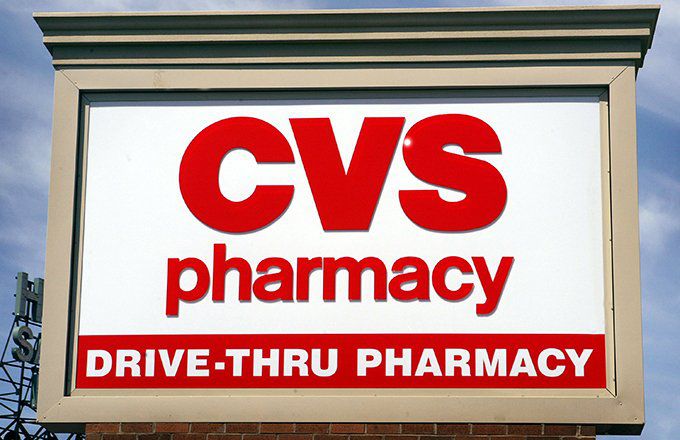[ad_1]
The demise of brick-and-mortar retail may be capturing the news, but despite the Amazon effect, some companies are still thriving. Even as Amazon’s entry into the retail pharmacy business becomes real, CVS Health is not just looking to survive, but to grow. In May 2018, CVS made progress regarding its $69 billion acquisition of Aetna Inc., an American health insurance company. In June 2018, millions of dollars worth of shares were reportedly bought by companies such as Personal Resources Investment & Strategic Management Inc. with 23,629 shares, CapWealth Advisors LLC with 23,629 shares, and Sentry Investments Corp. with 153,800 shares—according to the latest SEC filings.
Shares of both CVS Health and Aetna rose on July 11, 2018, following a report that the Department of Justice will not challenge their merger. Bloomberg reported the news first, citing the trade publication Reorg Research.
On August 8, 2018, CVS reported second quarter earnings with net revenues of $46.7 billion, up 2.2% from the same quarter last year.
Some History
CVS Health Corp (CVS) (originally Consumer Value Stores) can trace its lineage all the way back to 1922. The current incarnation of CVS would be unrecognizable to its founders. First a shoe company, then a general merchandiser, in the mid-1990s the corporation now known as CVS sold off all its units excluding the lucrative pharmacy operations. Shortly thereafter, it began acquiring rival chains—Eckerd, Osco, Sav-On, and Longs. Today CVS has over 9,800 retail locations, operating in 49 U.S. states, Washington D.C., Puerto Rico, and Brazil. The company employs 246,000 people.
For accounting purposes, CVS maintains four business divisions. In decreasing order of size, those are pharmacy, medical clinic, pharmacy benefit management, and specialty. While CVS revenue has stabilized over the last couple of years, it leveled off at $184.8 billion in 2017.
Prescriptions and More
CVS’s pharmacy division is responsible for more than 67% of its revenue. The term “pharmacy” in this context is a little misleading, and this particular sector of the business should probably best be styled “retail.” It includes not only dispensing prescriptions and administering flu shots, but all the convenience/sundry sales normally associated with visits to the drugstore; everything from candy and cookies to “As Seen on TV” novelties like Snuggies and Slap Chops.
CVS’s medical clinic operations, branded “MinuteClinic,” include 1,100 retail clinics in 33 states. CVS entered this industry relatively late but has already become the market leader.
Benefits Management
Pharmacy benefit management is the part of CVS’s business that processes prescription claims. Known by the name Caremark, it is distinct from CVS’s pharmacy operations in that the former is a high-volume operator that deals directly with drug manufacturers, setting prices, handling mail orders, etc. In other words, all the intangible administrative stuff that seems to define advanced economies in the early 21st century.
Finally, CVS’s specialty department handles the high-end, complex, life-sustaining, and expensive drugs that operate on low volume but gigantic prices. For every 1,000 patients who need a commonplace Paxil or Xanax prescription, there are one or two who require a $6,000 vial of Soliris to stimulate the creation of red blood cells and keep themselves alive. Because such drugs are so rare, costly, and specialized, they necessitate a CVS department unto themselves. Subdivisions of CVS’s specialty business include Accordant, which offers an insurance-paid care program to patients who suffer from any of 17 specific serious conditions (e.g. hemophilia, cystic fibrosis); Coram, whose nurses will come to your house and infuse your veins to help treat hemophilia, chronic congestive heart failure, etc.; and Novologix, which makes and maintains claims software. Almost five million people a day patronize CVS stores, and Coram serves more than 45,000 patients every month.
CVS earns so much revenue from so many sources that it could remove a high-margin item like tobacco from its stores, a measure undertaken at least primarily for public relations, and suffer no lasting damage. Granted, idealism only goes so far before butting heads with pragmatism. The company has not announced any plans to stop selling beer and wine.
The Bottom Line
Americans allegedly love freedom and football, but the true national pastime is consuming pharmaceuticals. Everything from anxiety to restless legs syndrome now has a corresponding pill or injection to alleviate or eradicate the symptoms, and companies like CVS are at the forefront of getting those drugs to users. With the number of medical conditions being newly identified consistently outpacing those being eradicated, the amount of money spent on pharmaceuticals will likely increase—a development that should be resonant music to CVS shareholders.
[ad_2]
Source link Google News

